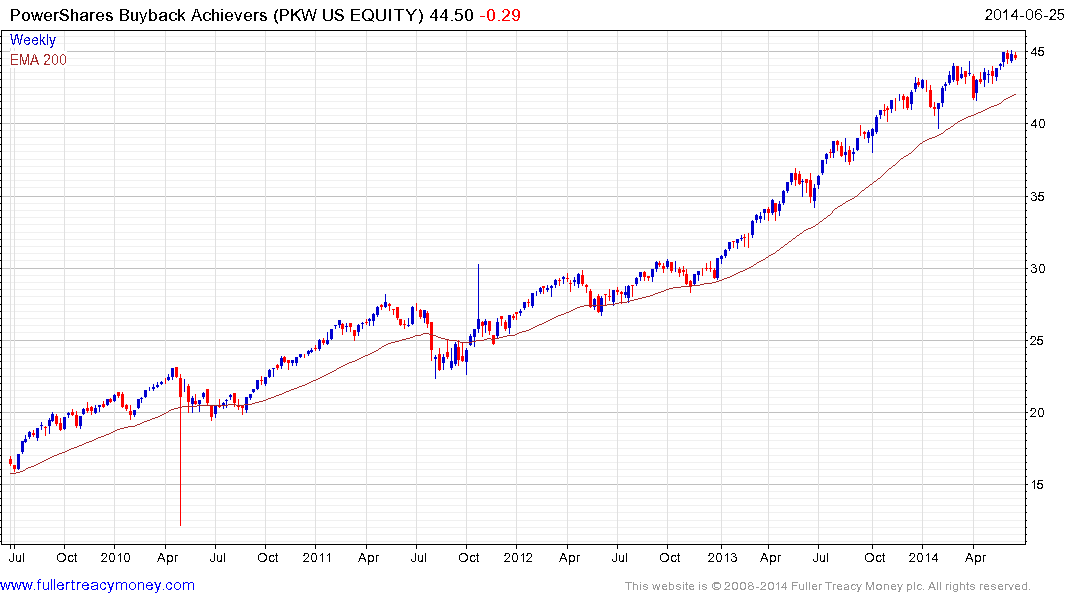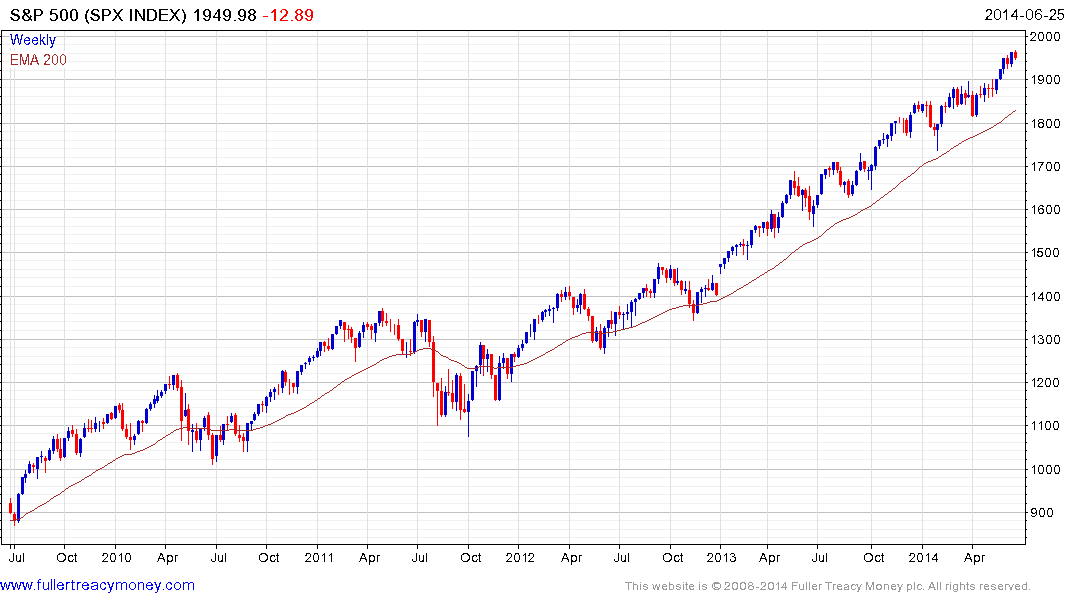Capex about to turn up: The missing link in the US recovery
Thanks to a subscriber for this report from Deutsche Bank which may be of interest. Here is a section:
Spending on non-residential structures fell to unusually depressed levels following the financial crisis and has remained weak during this recovery. Similar to residential investment, much of this weakness can be attributed to a need to work through the overbuilding that occurred during the run up to the financial crisis, as structures share of GDP rose rapidly from 2004 through 2008. There are some indications that this excess supply has diminished materially and that pent up demand for non-residential structures should lead to stronger spending going forward. For example, the vacancy rate for office space nationally has declined steadily over the past four years toward historically more normal levels (Chart 18). In addition, in response to the shale energy boom in the US, investment in energy-related structures has been notably strong. This supports the outlook for a pickup in investment in commercial structures.
IPP: Uptrend should continue
Spending on IPP – composed of spending on software, R&D, and entertainment, literary and artistic originals – has displayed a steady uptrend as a share of GDP over the past several decades, which has been relatively impervious to cyclical factors. Recent strength in IPP spending has been driven primarily by the R&D component. IPP spending may also benefit from a shift away from investment in information processing (IP) equipment.Equipment: IP equipment has been notably weak
Equipment spending as a share of GDP remains well below historical averages for this point of the recovery. In this section we take a more granular look at equipment’s components to analyze the underlying causes of this weakness. We have already determined that transportation equipment is near longer-term averages. We also find that recent contributions to BFI from industrial equipment and the “other” equipment category appear to be in line with longer-term averages. Conversely, IP equipment appears to be the component driving much of the softness in total equipment spending. Spending on IP equipment has been consistently below its longer-term average contribution to overall fixed investment during this recovery (Chart 19).
The majority of established technology companies rely on corporate spending to boost earnings. The outperformance of the Nasdaq-100 highlights the fact the corporations have been spending on software and other services. The return to outperformance of the industrial sector in 2012 reflects increased spending on machinery and embedded processors. Generally speaking there is a perception that the US recovery is weaker than one might expect but the fact that companies are embarking on increased spending is a sign of confidence.

If companies are spending more on capital expenditure, one wonders if they will still be as active in buying back their own shares. The PKW Buyback Achievers ETF is now underperforming the S&P500 but in absolute terms remains in a relatively consistent uptrend.

Regardless of the fact that the corporate sector is healthy and that the consumer has slowly but surely deleveraged, there is still a sizeable number of institutional investors who see value in the sovereign bond sector. For them, the reversal of GDP growth in the first quarter, continued slack in parts of the economy, the absence of wage inflation, the low labour participation rate and the low quality of jobs created all point to continued softness. As a result there remains a heated argument over whether the Fed will be able to begin to raise interest rates next year. The threat of upward pressure on oil prices represents an additional bullish factor for bonds.
We continue to be guided by the price action and from our perspective the 2000 level on the S&P represents an important psychological hurdle while precious metals appear to offer reasonably cheap alternatives. Following more than a 30-year bull market Treasuries represent a risky investment and corporate spreads are worryingly tight.
Back to top

